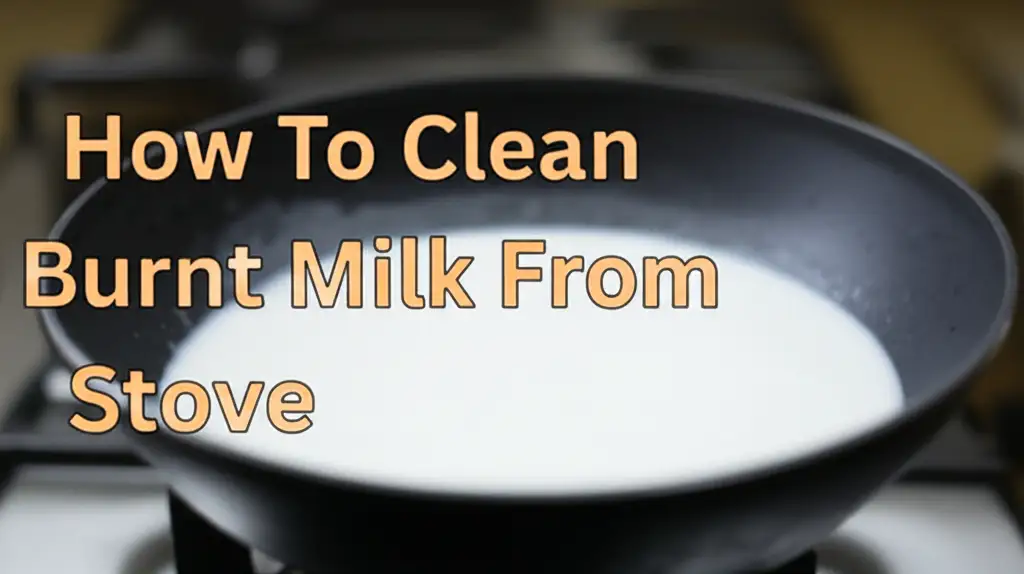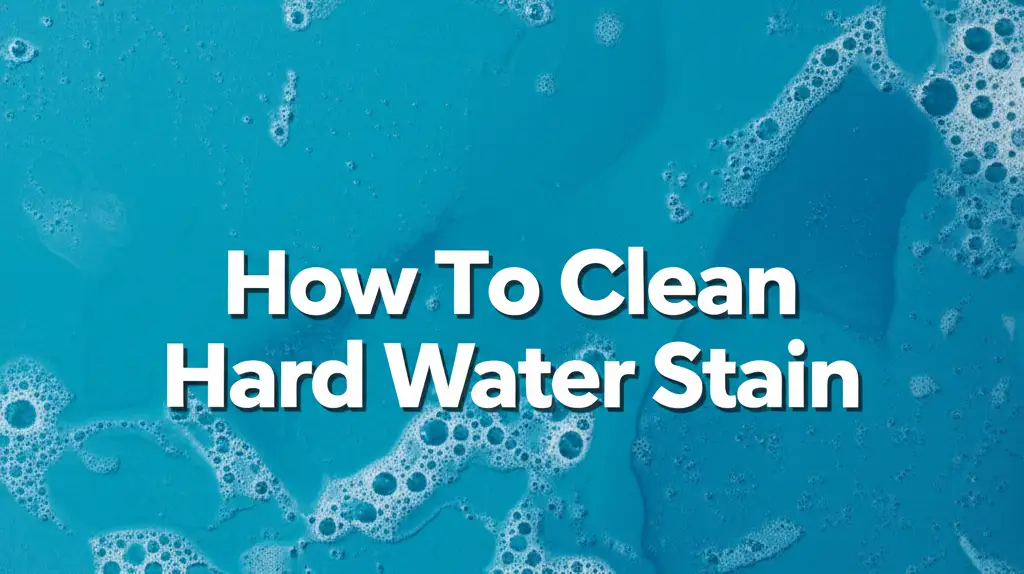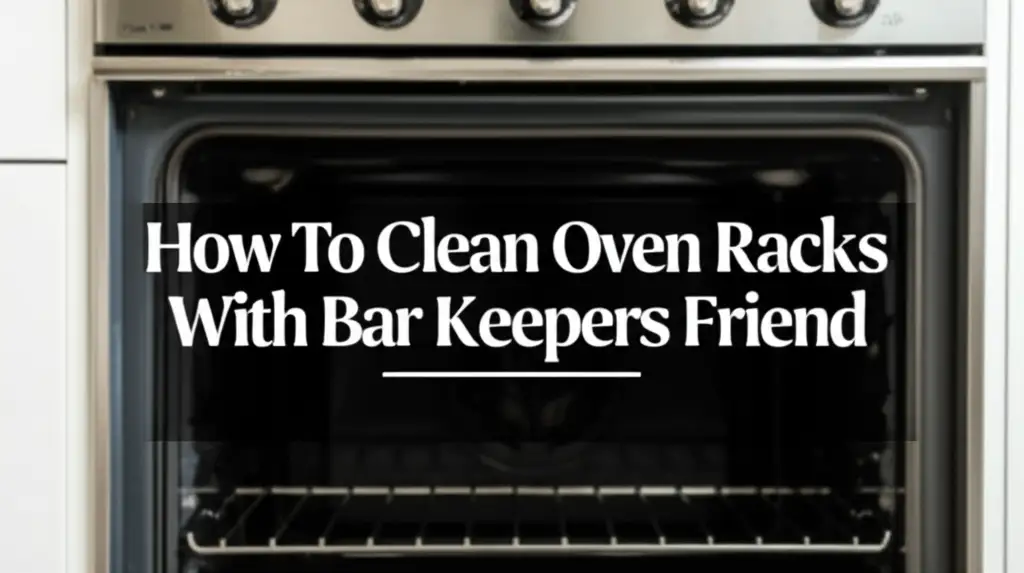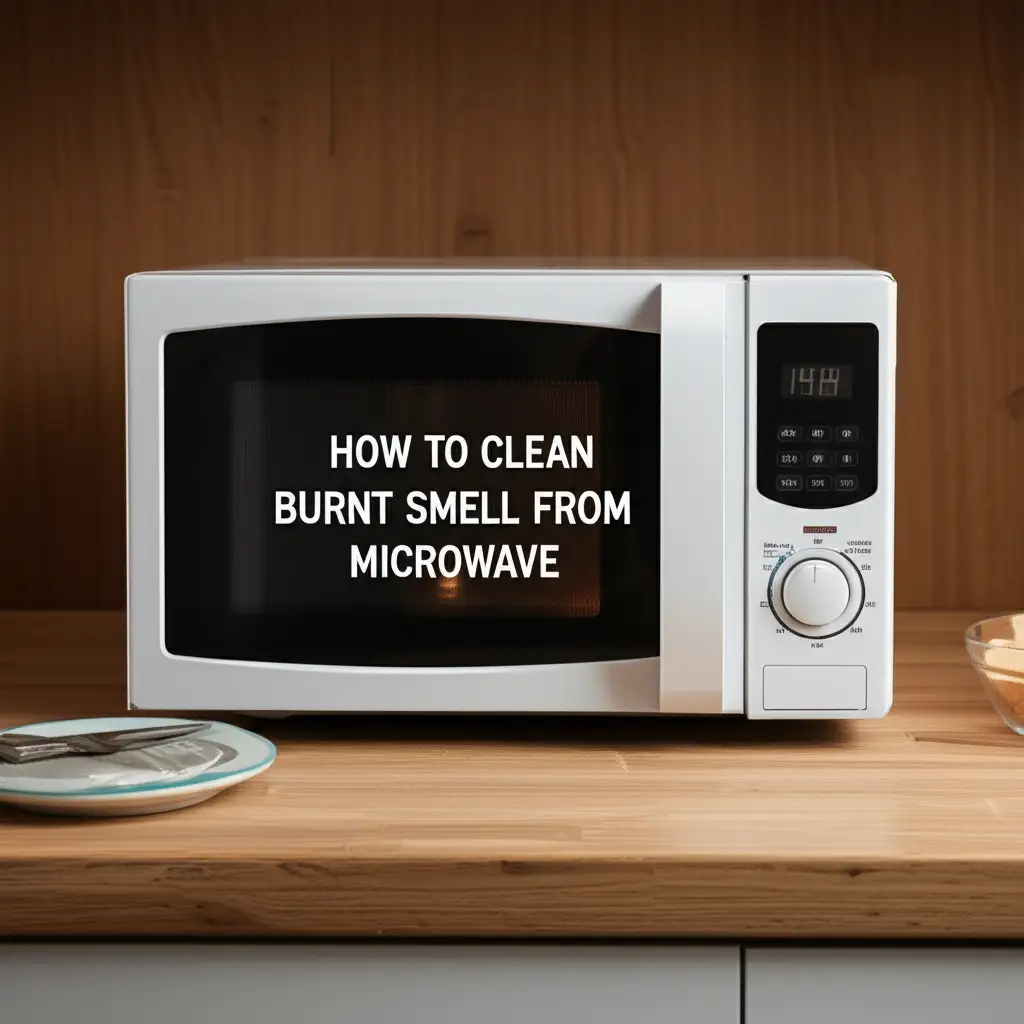· Home Cleaning · 16 min read
How To Clean Burnt Milk From Stove

Clean Burnt Milk from Your Stove: A Complete Guide
We have all been there. You turn your back for a moment, and suddenly, your pot of milk boils over. The milk hits the hot stove, and a stubborn, burnt mess forms instantly. It is frustrating to see this sticky, dark residue. You might wonder how to clean burnt milk from your stove effectively.
Do not worry; this common kitchen mishap has simple solutions. This article will guide you through powerful, easy-to-follow methods. We will explore the best tools and techniques. You can make your stove top shine again. Let us get started and reclaim your clean kitchen.
Takeaway
- Act quickly to address burnt milk spills for easier removal.
- Use baking soda and water paste for a gentle yet effective cleaning.
- Vinegar helps dissolve stubborn residue and eliminates odors.
- Match your cleaning method to your specific stove top material.
- Prevent future spills by monitoring milk and using larger pots.
To effectively clean burnt milk from your stove, first, let the surface cool. Then, create a paste of baking soda and water, apply it to the burnt area, and let it sit for at least 15-30 minutes. Gently scrape off the softened residue with a non-abrasive tool, then wipe clean. For tougher stains, combine baking soda with white vinegar.
Understanding Burnt Milk Stains on Your Stove
Burnt milk stains are among the most annoying kitchen messes. They happen when milk spills onto a hot surface. The sugars and proteins in milk quickly caramelize and char. This forms a hard, sticky layer that bonds strongly to the stove top. This residue is tough to remove if left to cool and harden.
Different stove types react differently. A glass-ceramic stove top can show these stains very clearly. Gas and electric coil stoves might have residue stuck on grates or drip pans. Stainless steel surfaces can also get discolored. Quick action is important to prevent permanent marks.
The heat cooks the milk solids onto the surface. This creates a bond that plain wiping cannot break. You need specific cleaners and methods to loosen this bond. Understanding how these stains form helps in choosing the right cleaning approach. We aim to break down the burnt layer without damaging your stove.
It is important to understand the nature of these stains. The longer they sit, the harder they become. This makes removal more challenging. Immediate attention makes a big difference. However, even old stains can be tackled with patience and the right techniques.
Essential Tools and Supplies for Cleaning Burnt Milk
Having the right tools makes cleaning burnt milk much easier. You likely already own most of these items. Gather them before you start cleaning. This saves time and makes the process smooth. Safety is also important when dealing with cleaners.
Here is a list of what you will need:
- Baking Soda: A mild abrasive and deodorizer. It helps lift burnt residue.
- White Vinegar: An acid that helps dissolve milk proteins and sugars. It also cuts through grease.
- Dish Soap: Good for general cleaning and degreasing.
- Warm Water: Used to create pastes and rinse surfaces.
- Soft Cloths or Microfiber Towels: For wiping and polishing surfaces.
- Non-Abrasive Sponge or Scrubber: Helps to gently rub away residue without scratching.
- Plastic Scraper or Old Credit Card: Useful for gently lifting hardened burnt areas. Avoid metal scrapers on glass tops.
- Spray Bottle (optional): Handy for applying vinegar or water solutions evenly.
These simple supplies work together to tackle burnt milk stains. Baking soda and vinegar are powerful natural cleaners. They are safe for most stove surfaces. Always test new cleaners in an inconspicuous spot first. This ensures no damage occurs. Using soft tools protects your stove’s finish.
Remember to wear gloves if you have sensitive skin. Good ventilation is also a good idea. This ensures a pleasant cleaning experience. Having everything ready saves time. It makes the task feel less daunting.
Method 1: The Baking Soda and Water Paste Approach
The baking soda and water paste method is a classic. It works very well for most burnt milk stains. Baking soda is a gentle abrasive. It helps to lift the burnt particles without scratching your stove. This method is safe and effective for many surfaces.
First, ensure your stove top is cool to the touch. Applying cleaners to a hot surface can be dangerous. It can also cause chemicals to evaporate too quickly. You want the paste to sit and work. Safety first is always a good rule.
Follow these steps for the baking soda paste method:
- Clear the Area: Remove any pots, pans, or crumbs from the stove.
- Make the Paste: Mix baking soda with a small amount of warm water. You want a thick paste consistency. It should be spreadable but not too runny. A good ratio is usually three parts baking soda to one part water.
- Apply the Paste: Spread a generous layer of the paste directly onto the burnt milk stain. Make sure the stain is completely covered.
- Let it Sit: Allow the paste to sit on the stain for at least 15 to 30 minutes. For very stubborn or thick stains, you can let it sit for several hours or even overnight. The baking soda needs time to break down the burnt residue.
- Gently Scrape: After the soaking time, use a plastic scraper or an old credit card. Gently push the paste and loosened residue off the stove. Do not use metal tools on glass stove tops. You risk scratching the surface.
- Wipe and Rinse: Use a damp cloth to wipe away the remaining paste and grime. Rinse the cloth often. Make sure to remove all baking soda residue.
- Final Polish: Wipe the stove top dry with a clean, dry cloth. You can also buff it to a shine.
This method is highly effective for loosening burnt-on milk. It is gentle on your stove. The baking soda slowly softens the hardened mess. This makes it easy to remove. If you are curious about other uses for baking soda, you can learn how to clean with vinegar and baking soda for other household tasks. For a truly streak-free finish on glass, consider tips from how to clean black glass stove top without streaks.
Method 2: Vinegar’s Power Against Burnt Milk
White vinegar is another powerful ally in the fight against burnt milk. It is an acid. This means it can break down the proteins and sugars in burnt milk. Vinegar is excellent for dissolving stubborn stains. It also helps with odors. You can use it alone or with baking soda.
Ensure your stove is cool before applying vinegar. Direct heat can cause a strong vinegar smell. It can also cause the liquid to evaporate too quickly. You want the vinegar to penetrate the stain. A cool surface allows this to happen.
Here are the steps for using white vinegar:
- Prepare the Area: Ensure the stove top is clean of loose debris.
- Apply Vinegar: You have a few options.
- Direct Soak: Pour a small amount of white vinegar directly onto the burnt milk stain.
- Spray Application: Fill a spray bottle with undiluted white vinegar. Spray the stain generously.
- Vinegar-Soaked Cloth: Soak a clean cloth in white vinegar. Place the wet cloth directly over the burnt area.
- Let it Sit: Allow the vinegar to sit on the stain for 10 to 15 minutes. For very tough stains, extend this time to 30 minutes. The acid needs time to work on the burnt milk.
- Scrub Gently: After soaking, use a non-abrasive sponge or a soft brush. Gently scrub the burnt area. You should see the stain starting to lift.
- Wipe Clean: Use a clean, damp cloth to wipe away the loosened residue and vinegar. Rinse your cloth often to remove all traces.
- Final Wipe: Dry the stove top completely with a clean, dry cloth. This prevents water spots.
For extra power, you can combine vinegar with baking soda. Apply the baking soda paste first. Then, spray vinegar over the paste. This will create a fizzing reaction. This reaction helps to lift even more stubborn residues. It is a powerful combination for many cleaning challenges. For specialized cleaning, such as on glass stove tops, vinegar is often a key ingredient; you can learn more about how to clean glass stove top with vinegar. Similarly, if you have dealt with how to clean burnt sugar from a pan, you know vinegar can be effective for various types of burnt residues.
Tackling Tough Burnt Milk on Different Stove Types
Different stove materials require specific care. What works well on one surface might damage another. Knowing your stove type helps you choose the safest and most effective cleaning method. Let us look at common stove types and their needs.
Glass-Ceramic and Induction Stoves
These stoves have smooth, sleek surfaces. Burnt milk can stick strongly to them.
- Cool Down: Always let the stove cool completely. Heat can cause cleaners to harden or damage the surface.
- Baking Soda Paste: This is your go-to method. It is gentle enough not to scratch. Apply a thick paste and let it sit for a long time.
- Specialized Scrapers: Use a razor blade scraper designed for glass stove tops. Hold it at a shallow angle. Push gently to lift softened residue. Never use a regular metal knife or harsh abrasive pads. They will scratch the glass. You might find more tips on dealing with tough glass stove top stains from resources like how to clean burnt water off glass stove top.
- Commercial Cleaners: Many brands offer cleaners specifically for glass-ceramic stove tops. They often come with a scraper and polishing pad. Follow product instructions carefully.
Gas and Electric Coil Stoves
These stoves have more nooks and crannies where milk can hide.
- Disassemble (if possible): For gas stoves, remove grates and burner caps. For electric coils, lift the elements if they pivot.
- Soak Grates and Caps: Soak removable parts in hot, soapy water. For very stubborn burnt milk, you can add baking soda or vinegar to the soaking water. You can also explore how to clean gas stove grates in dishwasher for convenience.
- Clean Drip Pans: These are often the worst hit. Soak them in warm, soapy water. Use a non-abrasive scrubber to remove the softened burnt milk. Baking soda paste can be used directly on the drip pans.
- Stove Top Surface: Use baking soda paste on the enamel or stainless steel surface around the burners. For black enamel, be gentle; more specific tips are available at how to clean black enamel stove top.
- Coil Elements: Do not immerse electric coil elements in water. Wipe them with a damp cloth if needed, but they usually self-clean small spills through heat.
Stainless Steel Stoves
Stainless steel is durable but can scratch. It also shows streaks easily.
- Gentle Approach: Use baking soda paste first. Avoid abrasive scrubbers or steel wool. They can leave permanent scratches.
- Grain Direction: Always wipe stainless steel in the direction of its grain. This helps prevent streaks and polishes the surface.
- Vinegar Finish: After cleaning, a wipe with white vinegar can help remove streaks and restore shine. Dry immediately with a clean, microfiber cloth.
No matter your stove type, patience is key. Let the cleaning agents work their magic. This reduces the need for harsh scrubbing. Your stove will thank you for the gentle care.
Advanced Tips for Stubborn Burnt Milk Residue
Sometimes, burnt milk stains are incredibly tough. They might have been there for a long time. Or the spill was very large. When standard methods do not fully work, you need advanced techniques. These methods require a bit more caution. Always test them in a small, hidden area first.
Here are some advanced strategies:
- Hydrogen Peroxide Boost: Hydrogen peroxide can be an effective booster. After applying baking soda paste, you can spray a light mist of 3% hydrogen peroxide over it. This creates more fizzing action. It helps to lift the deepest stains. Let it bubble for 5-10 minutes. Then, proceed with scraping and wiping. Always use gloves and ensure good ventilation when using hydrogen peroxide. Do not mix it directly with vinegar.
- Commercial Stove Top Cleaners: Many specialized cleaners are available for different stove types.
- For Glass-Ceramic: Look for cream cleansers. These usually contain mild abrasives and polishing agents. Apply, rub with a soft pad, and buff clean. They are designed to break down burnt food.
- For Stainless Steel: Use stainless steel cleaners and polishers. These clean and protect the surface. They also leave a streak-free shine.
- Always read the product label. Follow the instructions precisely.
- Repeated Applications: For extremely stubborn stains, one application might not be enough. Do not get discouraged. Repeat your chosen method multiple times. Each cycle will slowly break down the layers of burnt residue. Patience is a strong tool in tough cleaning jobs.
- Heat (with extreme caution): This is for very hard, old stains only. Very slightly warm the area. Do this by turning on the burner for just a few seconds. The goal is to barely warm the burnt milk. This can help soften it. Immediately turn off the heat. Then, apply your cleaning paste or solution to the slightly warm surface. This must be done with extreme care. Overheating can make the stain worse or damage the stove. This method is generally not recommended for glass stove tops due to thermal shock risks.
Remember, safety comes first. Protect your hands and eyes. Ensure your kitchen is well-ventilated. These advanced tips can save your stove from the worst burnt milk stains. They ensure your kitchen looks its best.
Preventing Future Burnt Milk Spills
Prevention is always better than cure. Cleaning burnt milk is work. Avoiding the spill in the first place saves you time and effort. A few simple habits can greatly reduce the chances of milk boiling over.
Here are practical tips to prevent future burnt milk spills:
- Use a Larger Pot: Choose a pot much bigger than the amount of milk you are heating. This provides ample headspace for the milk to foam up without overflowing. Milk expands significantly when heated.
- Maintain Low Heat: Heating milk slowly on low to medium-low heat is key. High heat makes milk boil over very quickly. It also increases the chances of scorching at the bottom of the pot. Patience pays off.
- Constant Stirring: Stir the milk frequently as it heats. Stirring helps distribute heat evenly. It also breaks the surface tension that forms. This surface tension can trap steam and cause a sudden boil-over. Use a whisk or a spoon.
- The Wooden Spoon Trick: Place a wooden spoon across the top of the pot. This old trick often works. When the milk foam rises, it hits the spoon. This breaks the bubbles. It can prevent the milk from spilling over. It is a simple physical barrier.
- Watch the Pot: Do not leave milk unattended on the stove. This is the most important rule. Milk can go from calm to boiling over in seconds. Stay near the stove. Keep an eye on it until it reaches the desired temperature.
- Create a Butter Ring: For small amounts of milk, rub a thin layer of butter or oil around the inside rim of the pot, just above the milk line. This can create a barrier. The milk foam finds it harder to climb over the greasy surface.
- Specialized Milk Savers: You can buy devices called milk savers or milk watchers. These are discs placed at the bottom of the pot. They rattle or make noise when the milk is about to boil. They also help distribute heat.
By adopting these habits, you can enjoy your warm milk without the headache of cleaning up a messy spill. A little vigilance goes a long way in keeping your stove spotless. These simple steps make cooking more enjoyable.
FAQ Section
Can I use steel wool on my stove to clean burnt milk?
No, you should not use steel wool on most stove tops. It is too abrasive. It can scratch glass-ceramic, stainless steel, and enamel surfaces. Stick to softer tools like sponges, plastic scrapers, or microfiber cloths. These prevent damage.
How long should I let the baking soda paste sit on the burnt milk stain?
For most burnt milk stains, let the baking soda paste sit for at least 15 to 30 minutes. For very tough, thick, or old stains, you can leave the paste on for several hours. Even leaving it overnight can be effective. The longer it sits, the more it softens the residue.
What if the burnt milk stain still won’t come off after trying these methods?
If the stain remains, repeat the chosen cleaning method. Apply the paste or solution again. Let it sit for a longer duration. You can also try combining methods, like using baking soda paste followed by a vinegar spray. For very stubborn cases, consider a specialized commercial stove top cleaner designed for your specific stove type.
Is it safe to use a razor blade on a glass stove top?
Yes, it is safe to use a razor blade or specialized glass stove top scraper. But you must use it correctly. Hold the blade at a very shallow angle, almost flat against the glass (around 10-20 degrees). Push gently. Never use the corner of the blade. Only use it on cooled surfaces.
How do I remove the burnt smell after cleaning the stove?
After cleaning, the burnt smell should fade. To help it disappear faster, ensure good ventilation in your kitchen. Open windows or turn on your exhaust fan. You can also wipe the stove with a solution of water and white vinegar. Place a bowl of white vinegar or activated charcoal on the stove overnight to absorb lingering odors.
Conclusion
Cleaning burnt milk from your stove might seem like a daunting task at first. Yet, with the right approach, it is entirely manageable. We have explored several effective methods. From simple baking soda and water paste to the power of white vinegar, you have tools to tackle any spill. Remember to always let your stove cool before cleaning. Choose the method best suited for your stove type.
Patience is your best friend when dealing with these stubborn stains. Allow cleaning agents enough time to work. Gentle scraping and wiping will then lift the residue. Do not rush the process. Your stove will look spotless with a little effort.
Beyond cleaning, preventing future spills is the smartest move. Use larger pots, keep the heat low, and never leave milk unattended. These simple habits save you time and frustration. A clean stove makes your kitchen a more pleasant place. Now, you know exactly how to clean burnt milk from stove surfaces. Take these tips to your kitchen. Enjoy a gleaming, spill-free cooking space. Share your success stories with others.
- burnt milk
- stove cleaning
- cleaning tips
- kitchen hacks
- stain removal
- milk spills




